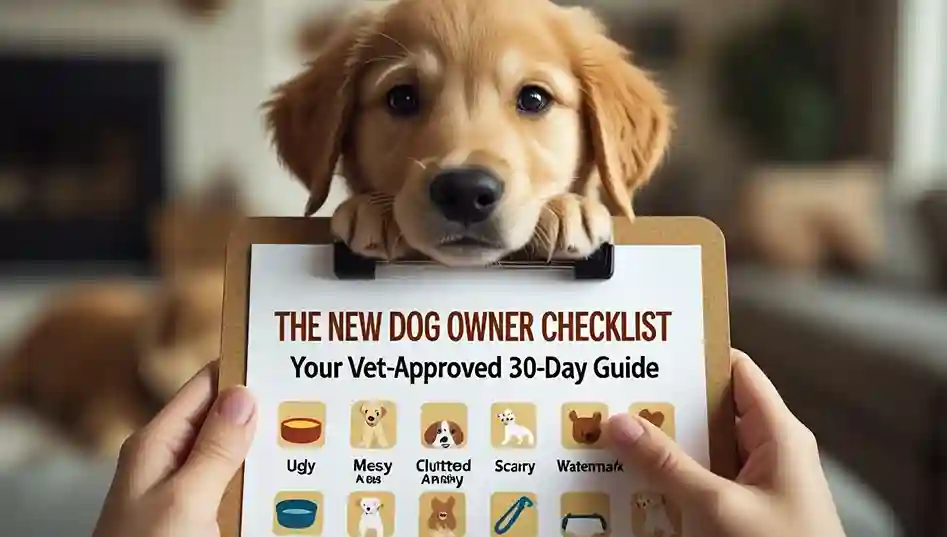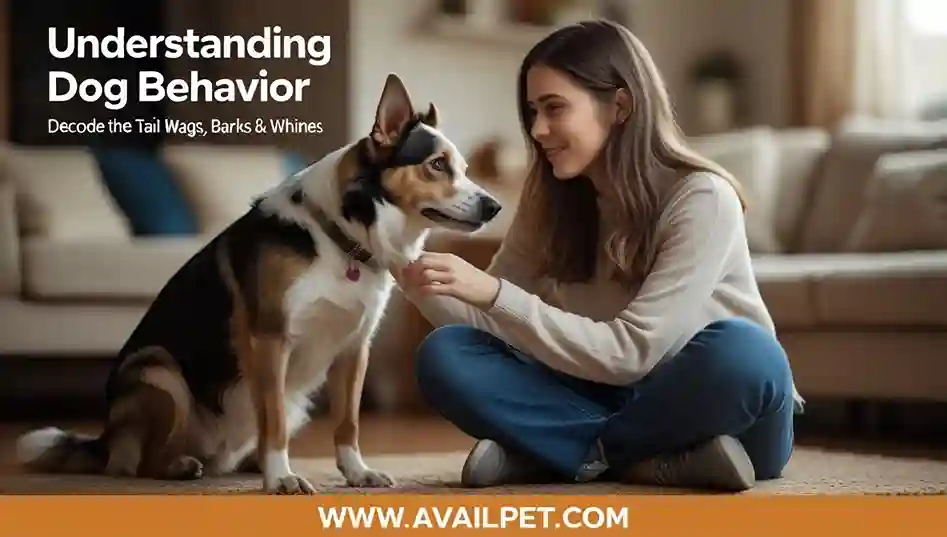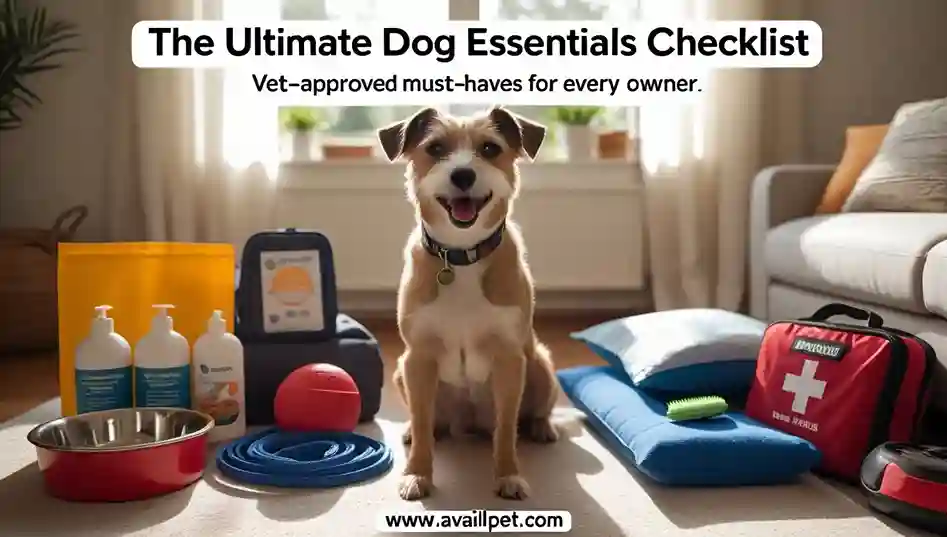The first few months with your new puppy are a whirlwind of cuddles, training, and a critical, time-sensitive task: socialization. Proper socialization is about more than just playdates; it’s about strategically exposing your puppy to the world in a positive way to prevent fear and anxiety for the rest of their life. Following a structured puppy socialization checklist during their key developmental window is one of the most important things you can do, right alongside their vaccination schedule, to ensure they grow into a confident, well-adjusted dog. It’s a core component of the healthcare and training sections in our ultimate New Dog Owner Checklist.
This comprehensive, vet-reviewed guide provides a safe, step-by-step checklist to ensure you don’t miss any crucial experiences. We’ve collaborated with Dr. Allona Jackson, DVM, to create a timeline that balances essential exposure with health precautions, answering the common question of how to socialize a puppy before they are fully vaccinated.
Forget the guesswork and anxiety. Consider this your ultimate roadmap to raising a happy, resilient dog who feels at ease in our human world. Let’s build that foundation together.
Key Takeaways: Puppy Socialization Checklist
Before we dive into the detailed checklist, here are the most essential principles for successful puppy socialization. These vet-approved guidelines will help you build a strong foundation for your puppy’s future confidence.
- 🗓️ The Critical Window is Short: The prime socialization period occurs between 3-16 weeks of age. Experiences during this window significantly shape your puppy’s adult temperament and behavior.
- ✅ Quality Over Quantity Always: Brief, positive encounters matter far more than overwhelming experiences. Watch for stress signals like tucked tails or yawning, and end sessions on a positive note.
- 🛡️ Safety Before Socialization: You can safely socialize before full vaccination by carrying your puppy, using pet strollers, and selecting controlled environments away from unknown dogs.
- 🌈 Variety Builds Confidence: Expose your puppy to diverse people (different ages, appearances), various surfaces, common household sounds, and novel objects in a positive, controlled manner.
- 🎉 Make Every Interaction Positive: Use high-value treats and enthusiastic praise to create happy associations with new experiences. This builds positive neural pathways that last a lifetime.
“At a Glance” Comparison Table: Socialization Do’s vs Don’ts
| Do’s | Don’ts | Why It Matters |
|---|---|---|
| Introduce to vaccinated, calm adult dogs | Visit dog parks or areas with unknown dogs | Prevents disease transmission and avoids negative experiences that could create fear. |
| Use high-value treats and praise during new experiences | Force interactions when your puppy shows fear | Builds positive associations instead of creating lasting trauma or anxiety. |
| Keep sessions brief (5-15 minutes) | Overwhelm with too many new things at once | Prevents stimulus overload and ensures each experience remains positive. |
| Carry puppy in public spaces for safe exposure | Let puppy walk in high-risk areas before full vaccination | Allows safe introduction to sights and sounds while maintaining health safety. |
| Introduce one new element at a time | Combine multiple stressors (new people + loud noises) | Helps pinpoint what might cause fear and allows for gradual, positive exposure. |
Understanding Puppy Socialization Windows
Getting the timing right is crucial for effective socialization. These developmental stages create unique opportunities—and challenges—for building your puppy’s confidence.
The 3-16 Week Critical Period: Why Timing Matters
This brief window is when puppies are most open to new experiences. Their brains are primed to form lasting impressions about what’s “safe” versus “scary” in their environment. Positive experiences during this period can prevent future fear-based behaviors, while negative experiences or lack of exposure can lead to lasting anxiety. After 16 weeks, it becomes progressively harder to change these foundational impressions, making early socialization truly time-sensitive.
Reading Puppy Body Language: Stress vs. Curiosity Signals
Learning to read your puppy’s cues is essential for successful socialization. Curiosity signals include relaxed ears, soft eyes, a gently wagging tail, and forward movement toward new things. Stress signals can be subtle: yawning when not tired, lip-licking without food, trembling, tucked tail, pinned-back ears, or trying to hide. Recognizing these signs helps you adjust the pace and keep experiences positive.
Your Complete Puppy Socialization Checklist
This week-by-week guide ensures you cover all essential socialization experiences during your puppy’s critical development period. Always proceed at your puppy’s pace and keep sessions positive.
Weeks 8-10: First Socialization Foundations
- People: Meet 2-3 new, calm people daily (different genders, ages, wearing hats/glasses).
- Surfaces: Walk on grass, pavement, tile, wood floors, and a wobbly surface (like a cushion).
- Sounds: Play audio of household noises (vacuum, doorbell, TV) at low volume.
- Handling: Gently touch paws, ears, mouth, and tail while giving treats.
- Environment: Experience car rides in a secure crate or carrier.
Weeks 11-12: Expanding Environmental Exposure
- People: Meet people using mobility aids (canes, walkers, wheelchairs).
- Surfaces: Walk on grates, uneven pavement, through shallow puddles.
- Sounds: Experience real-life sounds like traffic, sirens (from a safe distance).
- Animals: See other animals from a distance (cats, birds, livestock).
- Procedures: Practice vet clinic visits for weigh-ins and happy visits.
Weeks 13-16: Building Confidence and Complexity
- Social Skills: Supervised play with vaccinated, gentle adult dogs.
- Public Spaces: Sit outside a café or store (puppy in carrier or on mat).
- Surfaces: Climb over low obstacles, walk through narrow passages.
- Sounds: Experience louder environmental sounds (construction, crowds).
- Alone Time: Practice brief, positive separations in a safe space.
Months 4-6: Maintaining Social Skills
- Novel Experiences: Visit new locations weekly (pet-friendly stores, different parks).
- Social Reinforcement: Continue positive interactions with various people and dogs.
- Environmental Challenges: Navigate more complex environments safely.
- Training Integration: Practice obedience skills in distracting environments.
- Car Comfort: Take longer car rides to fun destinations.
Safe Socialization Before Full Vaccination
You don’t have to choose between your puppy’s health and their behavioral development. These strategies allow for safe socialization while minimizing disease risks, bridging the gap before your puppy completes their essential puppy vaccination schedule.
Creative Ways to Socialize Safely
- Puppy Transport: Use a dog stroller, sling, or carry your puppy in your arms to expose them to new environments without putting them on the ground.
- Controlled Visits: Invite friends with healthy, vaccinated adult dogs to your home for supervised interactions.
- Car Field Trips: Park outside interesting locations (schools, parks, shopping centers) and let your puppy watch the world go by from the safety of your car.
- Private Playdates: Arrange one-on-one play sessions in your yard or a friend’s secure, clean outdoor space with dogs you know are vaccinated and friendly.
- Observation Sessions: Sit on a blanket in a quiet area of a park, allowing your puppy to observe people, bikes, and other stimuli from a safe distance.
Puppy Socialization Classes: What to Look For
A high-quality puppy class is one of the safest ways to socialize your dog. Look for these essential features:
- Health Requirements: Proof of first vaccinations and a recent health check required for all participants.
- Clean Environment: Disinfected floors and toys, with no sick puppies allowed in class.
- Small Class Size: No more than 6-8 puppies with multiple instructors.
- Supervised Play: Careful monitoring of all interactions with immediate intervention if needed.
- Positive Methods: Force-free training techniques that build confidence rather than fear.
- Structured Curriculum: Focus on positive experiences and early learning, not just free play.
A Veterinarian’s Perspective: Dr. Allona Jackson on Socialization
“I frequently see owners caught between two valid fears: the risk of disease before vaccinations are complete, and the risk of behavioral problems from inadequate socialization. The key is to understand that the behavioral risk of not socializing during this critical window is often greater than the disease risk when proper precautions are taken.
A puppy who isn’t properly socialized may develop fears that lead to lifelong anxiety, reactivity, or even aggression. These behavioral issues are often much harder to treat later in life than many of the diseases we vaccinate against. The goal isn’t to avoid all risk, but to manage it intelligently through methods like carrying your puppy in public, hosting controlled playdates with known vaccinated dogs, and choosing puppy classes that require health checks.
Remember that socialization isn’t just about meeting other dogs—it’s about building positive associations with the entire human world. Every positive experience during this period is an investment in your dog’s future emotional health.”
— Dr. Allona Jackson, DVM, AvailPet’s Lead Veterinary Consultant
“How We Tested” Methodology
At AvailPet, we understand that puppy socialization requires both scientific accuracy and practical application. Our socialization checklist was developed through a comprehensive, multi-phase process to ensure it’s both safe and effective for your growing puppy.
- Veterinary and Behavior Expert Development: This complete socialization protocol was created in consultation with Dr. Allona Jackson, DVM and reviewed by certified animal behaviorists. This dual-expert approach ensures the checklist balances health safety with behavioral science.
- Progressive Real-World Application: Our methodology follows the progressive exposure principles recommended by the American Veterinary Society of Animal Behavior (AVSAB), including the “rule of 7s” and systematic desensitization techniques. We’ve tested these approaches across various breed temperaments and household environments.
- Safety-First Protocol: Every recommendation prioritizes your puppy’s physical health and emotional well-being. We’ve specifically designed activities that can be safely implemented before puppies complete their vaccination series, using controlled environments and proper health precautions.
FAQs About Puppy Socialization Checklist
What if I miss the early socialization window?
While the prime socialization window closes around 16 weeks, you can still socialize an older puppy or adult dog. The process simply requires more patience and may progress more slowly. Focus on positive, gradual exposure to new experiences, and consider working with a certified professional dog trainer or behaviorist for guidance. The key is to avoid overwhelming your dog and to make every new experience rewarding.
How do I socialize a fearful puppy?
For a fearful puppy, proceed even more slowly and let them set the pace. Use high-value treats and never force an interaction. Create distance from the scary object or person and reward any calm behavior or curious glances. The goal is to build positive associations, not to prove they can handle the situation. If your puppy shows significant fear, consult a professional for help.
Can I socialize my puppy with unvaccinated dogs?
No, this is not recommended. Until your puppy has completed their full vaccination series, their immune system is not fully protected against dangerous diseases like parvovirus. Only allow interactions with dogs whose vaccination history you know and trust. This is why puppy socialization classes that require proof of vaccination are a much safer option.
What are signs of bad socialization?
Signs of poor or negative socialization include persistent hiding, excessive trembling, tucked tail, growling, snapping, or attempting to flee from new people, dogs, or environments. These behaviors indicate that experiences were either overwhelming, forced, or insufficient. If you see these signs, slow down and consult a professional to help rebuild positive associations.
Conclusion
Successfully navigating your puppy’s socialization is a gift that will last their entire lifetime, resulting in a confident, well-adjusted dog who can handle new experiences with ease. By following this vet-approved checklist, you’re building a strong foundation of positive associations that will help prevent fear, anxiety, and behavioral issues down the road.
This guide works hand-in-hand with our other essential puppy resources. For guidance on keeping your puppy healthy during this critical period, refer to our puppy vaccination schedule, and for establishing good habits from day one, our potty training guide has you covered. For a complete overview of all your new responsibilities, return to our ultimate New Dog Owner Checklist.
Sources:
- American Veterinary Society of Animal Behavior (AVSAB). “Position Statement on Puppy Socialization.”
- American Kennel Club (AKC). “Puppy Socialization Guide.”
- Review and input from Dr. Allona Jackson, DVM.
- Myers, Sophia, DVM. “Safe Socialization for Puppies.” Veterinary Practice News.
Full Disclosure: This article may contain affiliate links. If you make a purchase through these links, we may earn a commission at no extra cost to you. This helps us continue our research and provide valuable content.
Medical Disclaimer: This guide is for informational purposes only and is not a substitute for professional veterinary or behavioral advice. Always prioritize your puppy’s health and safety, and consult your veterinarian about local disease risks before beginning socialization.






